People
The Prodigies: Meet 8 Groundbreaking Millennial Artists Who Are Already Being Taught in Art History Classes
Professors are staking their claims that these artists will make it into the history books.
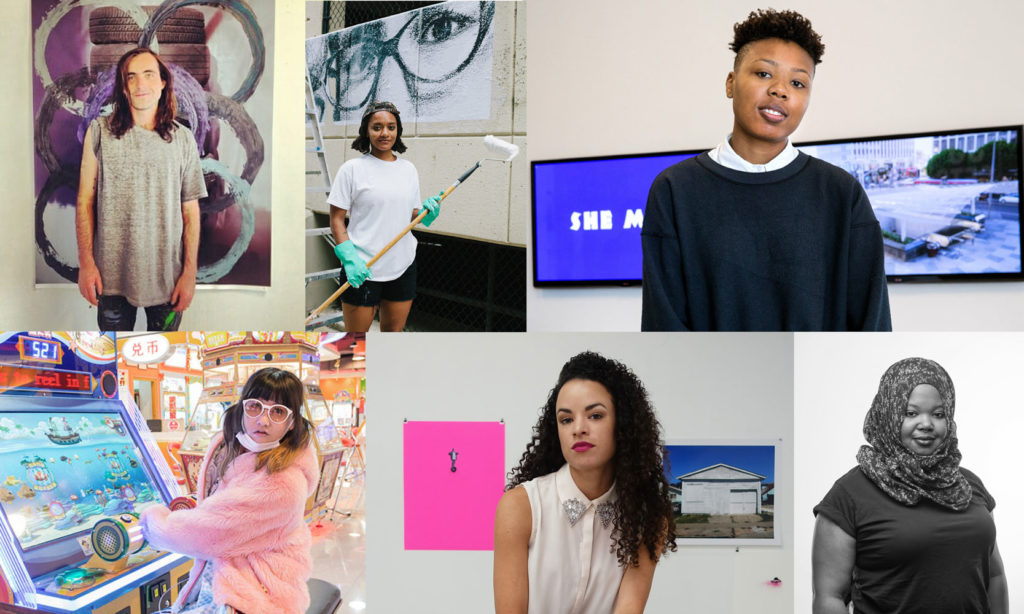
Professors are staking their claims that these artists will make it into the history books.

Taylor Dafoe

It’s not easy to crack the art-historical canon. Even many of the world’s best artists don’t make it into textbooks, major museum collections, or the larger cultural conversation until late in life—or well after their deaths. There is, however, the rare exception, the young artist whose work is so fresh, progressive, and mature that they merit consideration amongst the greats that came before them.
How many artists fit the bill? We reached out to over 30 professors teaching contemporary art at some of the top university art history and MFA programs around the country to find out.
We learned that few of them are teaching the works of very young artists. “It’s hard to name such young authors and already proclaim them as important contributors to the 21st century,” one professor told us.
Yet there are some professors who are sifting through the haze of the current moment and finding what they believe will be the future, incorporating into their syllabi artists who share, as Matt Saunders of Harvard University told us, “a shrewdness about their inheritance as artists. This makes them very teachable as current positions within a history.”
Here’s a look at those artists and the professors who are staking a claim for them.
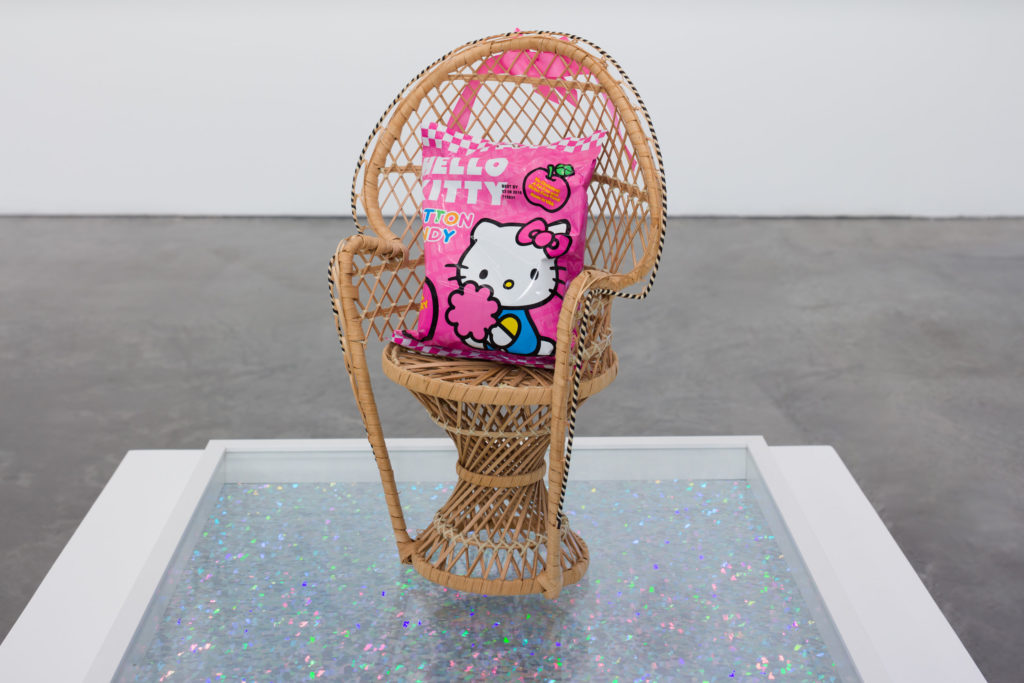
Sadie Barnette, Untitled (Mini chair) (2018). Courtesy of the artist.
Age: 34
Based In: Oakland, California
Known For: Filtering Minimalist and Pop forms through the political history of the United States; solo shows at the Museum of Contemporary Art San Diego, Charlie James Gallery, and the Baxter St. Camera Club of New York
Chosen By: Sampada Aranke, assistant professor of Art History, Theory, and Criticism at the School of the Art Institute of Chicago
Why: “Sadie’s work extends histories of Minimalism and Conceptual photography to account for contemporary black aesthetics. She takes on a critical approach to autobiography by creating interpersonal and inter-aesthetic dialogues: from Black Power to Minimalism, the readymade to hip hop culture, the stark austerity of a masculinist monochrome to the high shine glitter pop of girlie aesthetics.”
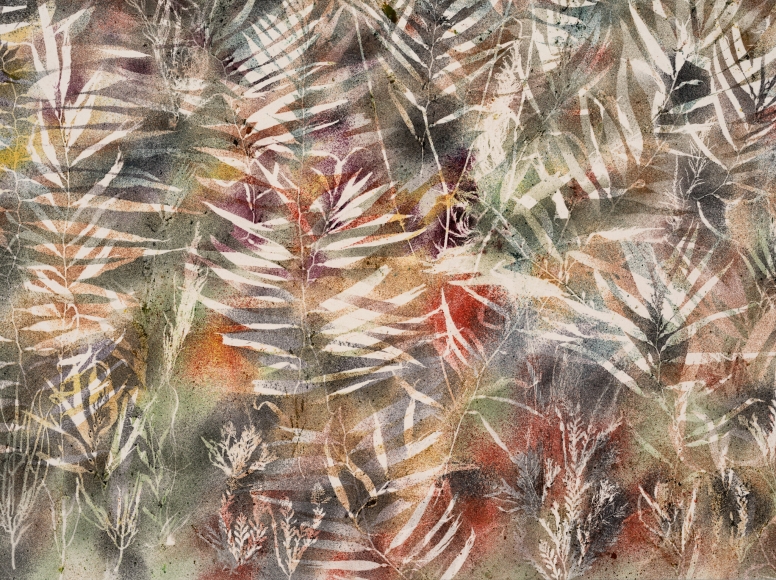
Detail of Sam Falls’s Untitled (Conception) (2018). Courtesy of 303 Gallery.
Age: 35
Based In: Los Angeles, California
Known For: His genre-defying take on the natural world and its place in contemporary art; solo shows at 303 Gallery, The Hammer Museum, and the Zabludowicz Collection; nearly two dozen artist books
Chosen By: David Raskin, professor of Contemporary Art History at the School of the Art Institute of Chicago
Why: “Students need to see a young artist bringing the ethical and political issues of techniques and labor to a larger art world audience. Specifically, he brings those issues together through the seductions of beauty to bear on our environmental crisis. His art gets a class of even younger artists talking about how art works and what it should do.”
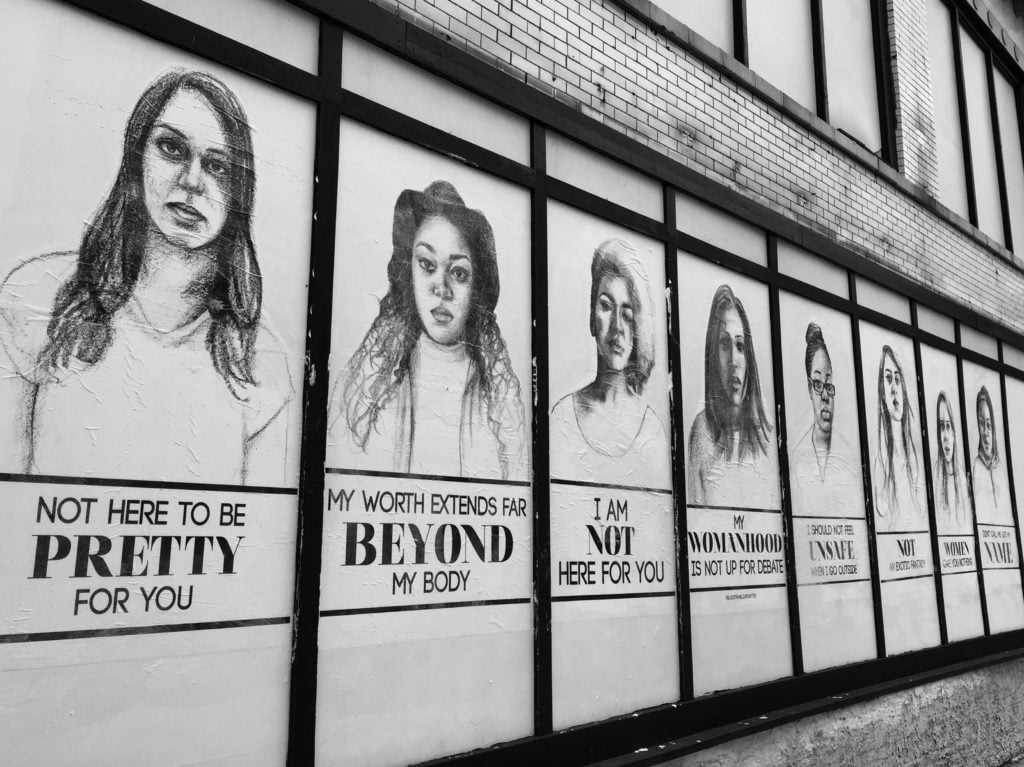
Installation shot of Tatyana Fazlalizadeh’s street campaign “Stop Telling Women To Smile.” Courtesy of the artist.
Age: 33
Based In: Brooklyn, New York
Known For: Her interest in articulating the lived experiences of marginalized peoples; a solo show at BRIC
Chosen By: Jasmine Wahi, professor, School of Visual Arts
Why: “Fazlalizadeh is the creator of the Stop Telling Women to Smile campaign. Her work in numerous communities not only challenges the violence of systemic misogyny, but also uplifts women of color. Her work demonstrates the impact that art can have on communities and changing perceptions. The accessibility of her work is also integral to a conversation around disrupting hegemonic institutional spaces that have historically left people of color out. By bringing her work into the public sphere, she cultivates meaningful conversations around issues that are relevant to anyone and everyone.”

Film still from Lu’s Electromagnetic Brainology Brain Control Messenger (2018). Courtesy of the artist and Société, Berlin.
Age: 34
Based In: Shanghai, China
Known For: An eclectic take on pop culture and her collaborative approach to art-making; solo shows at the Ullens Center for Contemporary Art and the M WOODS Museum
Chosen By: Jenny Lee, assistant professor of Art History, Theory, and Criticism at the School of the Art Institute of Chicago
Why: “The first name that jumps to my mind is Lu Yang, surname Lu, a new media artist born and based in Shanghai, who we recently hosted here in Chicago for a talk. Her fame has shot up over recent years, and the work is fascinating. Lu Yang’s work is significant for the collisions of animation/moving image and sound that energize her works. She is one of the few emerging artists from China who is not referred to, first and foremost, as a ‘Chinese artist,’ but rather receives attention as an artist who works at the cutting edge of art and technology. Her works are playful, often hilarious, even while addressing topics that would not ordinarily bear ‘joyous’ treatment (old age, cancer, menstruation, childbirth/abortion, etc). More recent works are taking her to increasingly transnational and multi-mediated collaborations, in particular with sound and performance artists from all around the world, including Japan and India.”
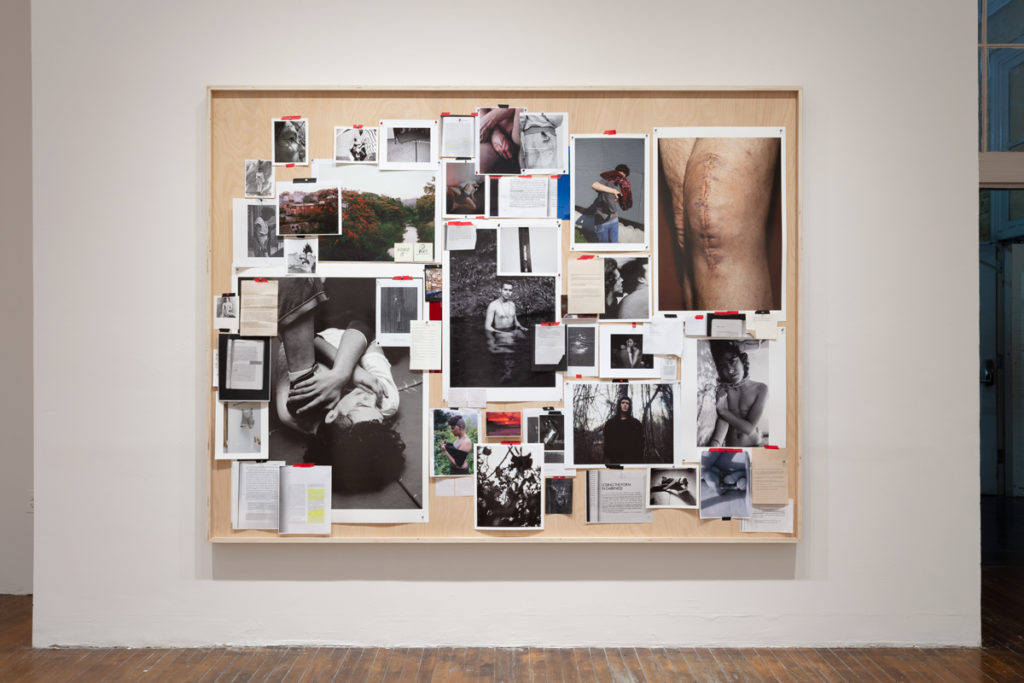
Installation view of Elle Pérez’s 2018 exhibition “Diablo” at MoMA PS1. Courtesy of MoMA PS1.
Age: 29
Based In: Bronx, New York
Known For: Their interest in combining portraiture, still life, and landscape photography to capture the everyday lives of their subjects; solo shows at MoMA PS1 and 47 Canal
Chosen By: Matt Saunders, associate professor of the Humanities, Harvard University
Why: “Elle’s work really resonates in its urgency, as well as its humanity, beauty and in accounting for the histories of photography. It enlivens and embodies a lineage while striking out on its own, which makes it quite meaningful in this context. There is nothing more important in the classroom than an artist as emboldening as Elle.”
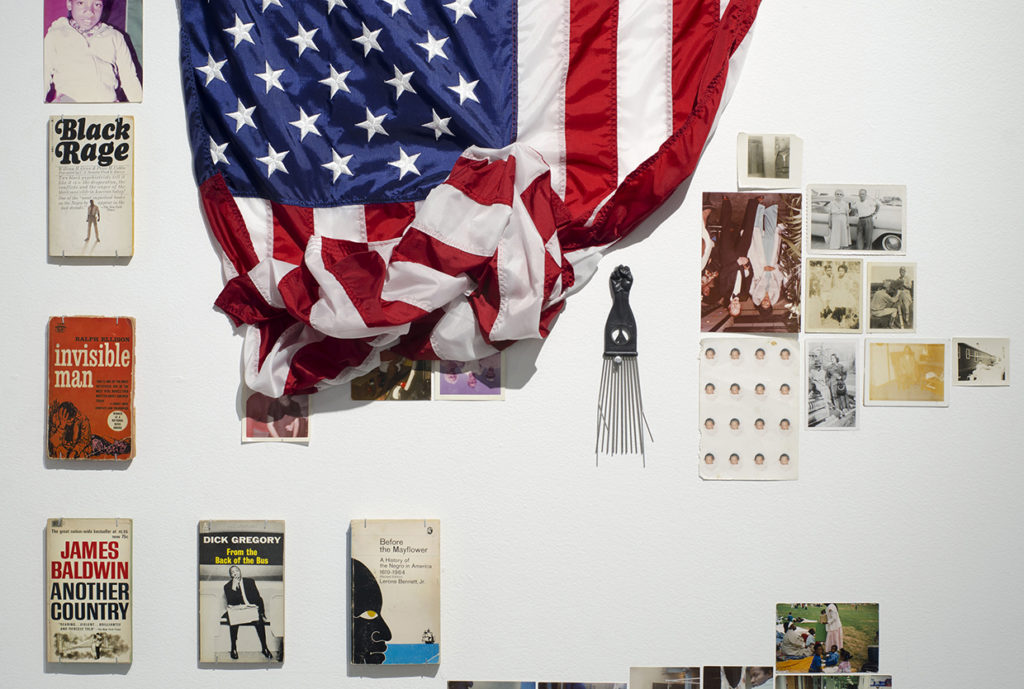
Installation view of Kameelah Janan Rasheed’s “No Instructions for Assembly-I,” 2013.
Age: 34
Based In: Brooklyn, New York
Known For: Her interdisciplinary, research-based approach to understanding the present through the past; solo show at the Brooklyn Public Library, group exhibitions at the Queens Museum and the Bronx Museum
Chosen By: Jasmine Wahi, professor, School of Visual Arts
Why: “Kameelah Janan Rasheed, who is also a professor at the School of Visual Arts, is an incredibly cerebral artist, writer, and educator. She is one of the most brilliant and conscientious artists working today with text, collage, and installation. Sometimes nearly illegibly subtle, and other times unabashedly direct, Rasheed speaks to various states of being, introspection, and existing in space. Her work on the commodification of black pain is one of my favorite interactive interventions to date.”

Installation view from Cameron Rowland, “91020000,” Artists Space, New York, 2016. Photo: Adam Reich
Age: 30
Based In: New York, New York
Known For: His interest in art that addresses imprisonment as a contemporary form of slavery; solo shows at the Museum of Contemporary Art, Artists Space, and Essex Street
Chosen By: Matt Saunders, associate professor of the Humanities, Harvard University
Why: “The social consciousness of his work, and his rigorous, innovative approach to both form and context is conversation-making. He raises important questions, interestingly, about the distribution of work, but especially about its efficacy—a pressing thought on many people’s minds. Rowland has been a subject not just in my tutorials, but in a class focused on printmaking.”
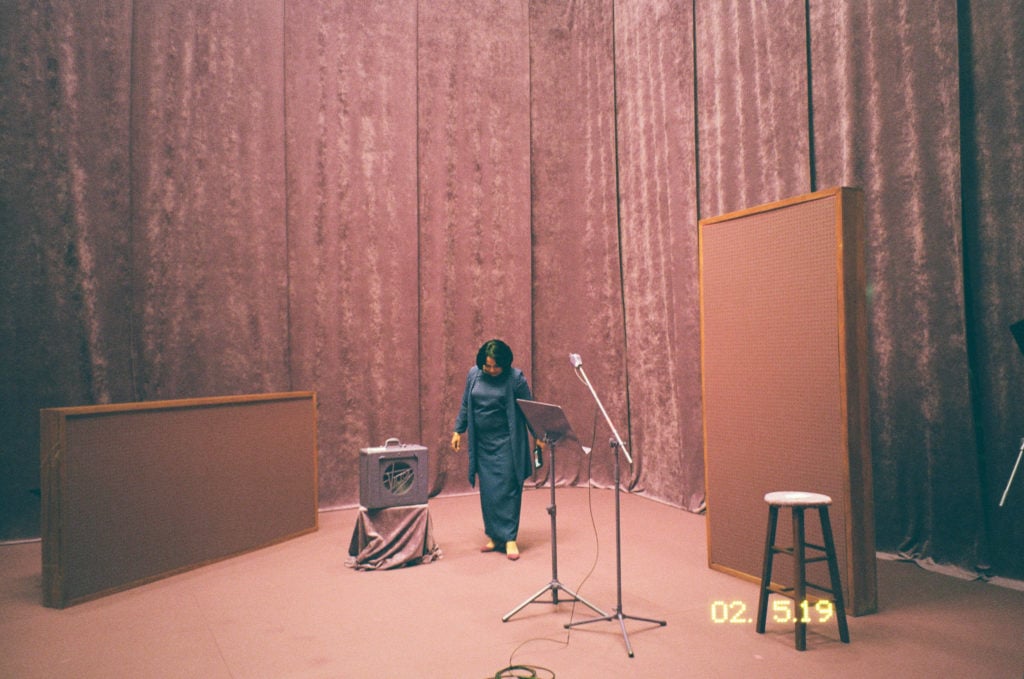
Martine Syms. Film still from Incense, Sweaters, and Ice (2017). Courtesy the artist and Bridget Donahue, New York.
Age: 31
Based In: Los Angeles, California
Known For: Her use of video and photography to explore the representation of blackness; solo shows at the Museum of Modern Art, the Institute of Contemporary Art, Bridget Donahue, Sadie Coles HQ
Chosen By: Karthik Pandian, artist and assistant professor of Visual and Environmental Studies, Harvard University
Why: “I’ve been teaching Martine Syms’s Notes on Gesture (2015), a video featuring Diamond Stingily, in my Introduction to Video course since 2016. Seen in concert with Dziga Vertov’s Man with a Movie Camera (1929), Maya Deren and Talley Beatty’s Study in Choreography for Camera (1946), and Barbara McCullough’s Water Ritual #1: An Urban Rite of Purification (1979), Syms’s work brings questions of movement into the present, reframing the internet’s obsession with black female expressivity. Her choices in framing and editing are uniquely accessible and challenging to students working in the medium today. Notes on Gesture both calls on and defamiliarizes the form of the animated gif, using composition and repetition to propose new possibilities for montage in the digital era.”